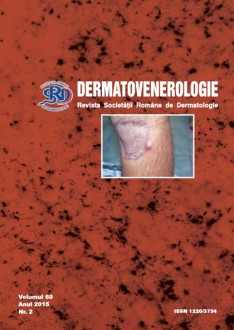Istoric: Etiologia AA s-a schimbat considerabil de-a lungul anilor, diferite scoli medicale desemnand diferite etiologii bolii. Mecanismul prin care imunoglobulina E ar putea interveni in patogenia AA este necunoscut. IgE total seric a fost masurat in studii anterioare, cu rezultate controversate.
Obiectiv: Acest studiu are ca obiectiv evaluarea serica a IgE total la atopici si neatopici, dintre pacientii cu AA; compararea rezultatelor cu un grup de control, subiecti aparent sanatosi; verificarea asocierii dintre imunoglobulinele E si AA.
Pacienti si Metoda: Dupa acordarea consimtamantului informat, au fost investigati 135 pacienti cu AA si 100 sanatosi, selectati din cadrul Clinicii de Dermatologie in perioada aprilie 2013–aprilie 2015. Toti subiectii studiului (pacienti si grup de control) au fost impartiti in doua grupuri, un grup cu atopie si altul fara atopie. Toti subiectii au fost supusi determinarii nivelului seric de IgE. S-au recoltat 5 ml sange de la fiecare participant pentru determinarea prin ELISA a IgE total (EIA-1788, DRG International Inc. SUA).
Rezultate: Pacientii atopici au fost in numar de 38 (28,15%) si cei neatopici au fost in numar de 97 (71,85%).
Douazeci si doi (57,9%) dintre cei 38 pacienti AA cu atopie au avut nivele crescute ale concentratiei IgE. Comparatia intre cazuri si grupul de control a aratat ca exista o diferenta semnificativa intre ambele grupuri (p < 0,05) dar nu au existat diferente semnificative intre tipurile de gravitate ale AA.
Concluzii: IgE total seric este crescut in atopie precum si la pacientii neatopici cu AA. Hipersensibilitatea poate fi implicata in patogenia AA. Rolul exact al IgE total in AA va trebui investigat ulterior, studiile viitoare fiind utile in clarificarea intelegerii mecanismelor AA, ducand la imbunatatirea diagnosticului si a tratamentului.
Cuvinte cheie: .


